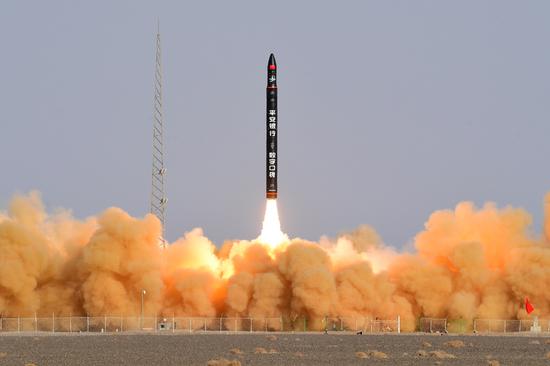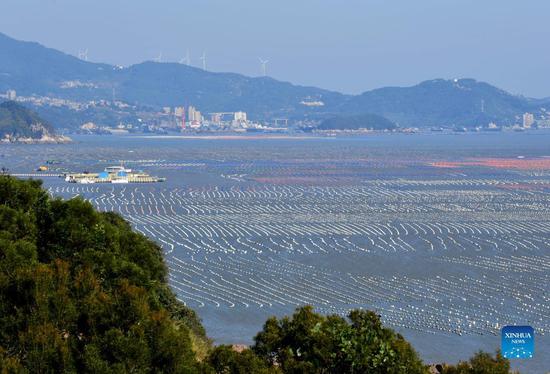
A wind farm is seen in Hami, Xinjiang Uygur autonomous region, in February. (Photo by CAI ZENGLE/FOR CHINA DAILY)
With an abundance of strong winds and long hours of sunlight, Northwest China's Xinjiang Uygur autonomous region has been gradually stepping up its clean energy installations, taking advantage of its abundant renewable energy resources.
As of the end of October, Xinjiang saw its total installed capacity for power connected to the grid reach 107 million kilowatts, among which 35.91 million kW were generated by clean energy, accounting for 33.7 percent of its total, the State Grid Xinjiang Electric Power Co said.
The installed capacity for wind power reached 23.74 million kW, followed by photovoltaic power of 12.17 million kW and hydropower of 8.74 million kW, said the company, which is a unit of centrally-administered State Grid Corp of China, known as the nation's largest power provider by generating capacity.
As one of the major regions taking the lead in China's renewable energy push, Xinjiang sees its new energy power generation capacity reaching 58.52 billion kilowatt-hours last year, up 8.69 percent year-on-year, and the capacity is expected to continue its climb this year. The utilization rate reached 91.14 percent, the Xinjiang company said.
The region's increasing clean power generation will help facilitate China's efforts to peak carbon emissions by 2030 and achieve carbon neutrality by 2060, it said.
Total wind and solar power capacity in Xinjiang is larger than that in countries such as the United Kingdom, Belgium and Japan, said Lin Boqiang, director of the China Center for Energy Economics Research at Xiamen University.
With apparent advantages in developing new-energy power generation thanks to its robust winds and plentiful sunshine, the new-energy installed capacity in Xinjiang is the second-highest among all regional branches of State Grid, following only Qinghai province, the State-owned firm said.
Xinjiang's vast area and low land costs make it economical to develop new-energy sources, Lin said.
Many State-owned enterprises are also eyeing Xinjiang for abundant solar and wind resources, as the nation vows to speed up construction of large-scale wind and solar power bases in deserts, optimizing the energy mix.
State Power Investment Corp said its installation capacity of wind and solar projects in Xinjiang exceeded 7.5 million kW, which is capable of providing clean power of 9.6 billion kWh annually, equivalent to a reduction of 8 million tons of carbon dioxide emissions.
The company has also initiated wind and solar projects with total capacity of 710,000 kW in Xinjiang this year.
To tackle the problem of the distances between the locations of electricity production and consumption, State Grid's Xinjiang unit has established long-distance, large-capacity and low-loss ultra-high voltage (UHV) power grid in Xinjiang to help send the locally-generated power nationwide.
So far, a total of 23,750-kilovolt transformer substations with an entire capacity of 57.5 million kV amperes, and 56 power transmission lines with a total length of 7,764 kilometers have been built, which have played a major role in boosting local economic and social development as well as local social stability, the company said.
Focusing on economic and social development as well as energy resource exploration, State Grid will continue to strengthen construction of power grids in Xinjiang during the 14th Five-Year Plan period (2021-25) and enhance construction of the third UHV direct current (DC) power line and plan the fourth UHV DC line to improve power export capacity, the central SOE said.
The company aims to form a main power grid network which will include seven circle lines for power supply within the region and six lines to transport power out of Xinjiang by 2025.
With efforts to upgrade power transmission, the volume of electricity sent from Xinjiang to other regions is seen exceeding 105 billion kWh this year, of which 27 billion kWh will come from new-energy generation, it added.


















































 京公网安备 11010202009201号
京公网安备 11010202009201号